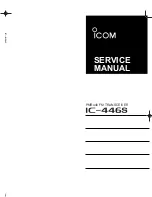
New ALE Features
AnyCalls
An AnyCall is a general broadcast similar to AllCall with the difference that it
requests responses, without designating any specific addressee(s). Therefore, an ALE
station may use the AnyCall to generate responses from essentially unspecified
stations, and thus it can identify new stations and connectivities.
The global AnyCall address is
@@?
. As a variation, the calling station can also use
selective AnyCall, which is identical in function to the global AnyCall, except that it
specifies the last single character of the addresses of the desired subset of receiving
stations (that is, it replaces the
?
with an alphanumeric – see more details in Table 1).
If even narrower acceptance and response criteria are required, double selective
AnyCall may be used: this is identical to selective AnyCall, except that its special
address (
@AB
) specifies the last two characters that the desired subset of receiving
stations.
The operator can always initiate an outgoing (transmit) AnyCall, but the MICOM 2
can be programmed to accept or ignore incoming (receive) AnyCalls.
Any station accepting an AnyCall stops scanning, and then initiates a response in a
randomly selected timeslot.
Self Addresses
Stations can also use their own self addresses when making calls. This may be useful
for self-test and maintenance purposes, etc.
The self address may be used only in specifically-addressed calls including a group
call, but not in an AllCall or AnyCall.
Null Address
The null address is a special type of address that is not directed to, accepted by, or
responded to by any station.
This address is intended for test and maintenance purposes, and to provide buffer
time: for example, if a null address appears in a group call, no station will respond in
the associated timeslot.
Inlink Address
The inlink address,
?@?
, is used to instruct all the stations participating in an already
established link to accept and act upon the information sent with the inlink address.
For example, any station can use the inlink address to send an AMD message that all
the linked stations would present to their user.
The inlink address is recognized only after a link is established between two or more
stations.
_________________________________________________________________________________________________
11
















































